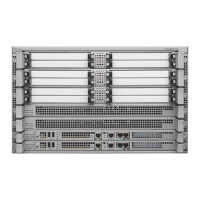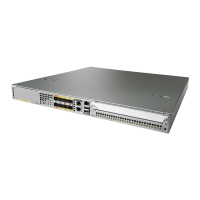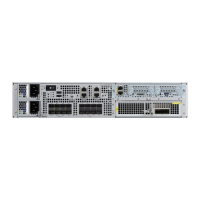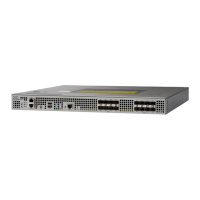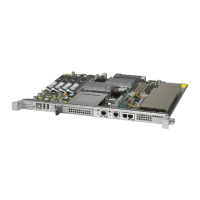11-6
Cisco ASR 1000 Series Aggregation Services Routers SIP and SPA Software Configuration Guide
OL-14127-08
Chapter 11 Troubleshooting the Gigabit Ethernet SPAs
Understanding SPA Automatic Recovery
Understanding SPA Automatic Recovery
When Gigabit Ethernet SPAs encounter thresholds for certain types of errors and identify a fatal error,
the SPAs initiate an automatic recovery process.
You do not need to take any action unless the error counters reach a certain threshold, and multiple
attempts for automatic recovery by the SPA fail.
The Gigabit Ethernet SPAs might perform automatic recovery for the following types of errors:
• SPI4 TX/RX out of frame
• SPI4 TX train valid
• SPI4 TX DIP4
• SPI4 RX DIP2
When Automatic Recovery Occurs
If the SPI4 errors occur more than 25 times within 10 milliseconds, the SPA automatically deactivates
and reactivates itself. Error messages are logged on the console indicating the source of the error and the
status of the recovery.
If Automatic Recovery Fails
If the SPA attempts automatic recovery more than five times in an hour, then the SPA deactivates itself
and remains deactivated.
To troubleshoot automatic recovery failure for a SPA, perform the following steps:
Step 1 Use the show hw-module subslot slot/subslot oir command to verify the status of the SPA. The status
is shown as “failed” if the SPA has been powered off due to five consecutive failures.
Step 2 If you verify that automatic recovery has failed, perform OIR of the SPA. For information about
performing OIR, see the
“Preparing for Online Insertion and Removal of a SPA” section on page 11-7.
Step 3 If reseating the SPA after OIR does not resolve the problem, replace the SPA hardware.
Using the Cisco IOS Event Tracer to Troubleshoot Problems
This feature is intended for use as a software diagnostic tool and should be configured only under the
direction of a Cisco Technical Assistance Center (TAC) representative.
The Event Tracer feature provides a binary trace facility for troubleshooting Cisco IOS software. This
feature gives Cisco service representatives additional insight into the operation of the Cisco IOS
software and can be useful in helping to diagnose problems in the unlikely event of an operating system
malfunction or, in the case of redundant systems, Route Processor switchover.

